Disclosure: This article contains affiliate links. We may earn a commission from purchases at no extra cost to you, which helps our travel content.
As someone who's documented educational innovation across five continents, I've developed a particular fondness for cities that exist slightly outside the mainstream tourist circuit. Barquisimeto—Venezuela's fourth-largest city and musical heartland—fits this description perfectly. Known as the 'City of Twilights' for its spectacular evening light, this underrated destination offers photographers a compelling mix of cultural vibrancy, architectural contrasts, and breathtaking natural backdrops that few international visitors ever experience.
Essential Gear for Barquisimeto's Diverse Conditions
Barquisimeto's varied shooting environments demand versatile equipment. During my week-long stay, temperatures fluctuated between pleasantly warm days and surprisingly cool evenings, especially at higher elevations like the Loma de León viewpoint.
Dust protection became crucial when exploring the semi-arid landscapes surrounding the city. I learned this lesson the hard way during a previous trip to Namibia, which prompted me to invest in a sensor cleaning kit that proved invaluable here as well. The fine dust particles are particularly problematic during the drier fall months.
For twilight photography—Barquisimeto's signature offering—a sturdy travel tripod is non-negotiable. The city's famous 'red hour' presents challenging exposure situations that require stability. I found myself frequently shooting in the 1/15-1/30 second range to capture the perfect balance between ambient light and artificial city illumination.
While exploring the city's markets and street scenes, I appreciated having a lens pen for quick cleanups between shots without drawing attention to myself. Security considerations made me reluctant to perform more involved cleaning procedures in public spaces.
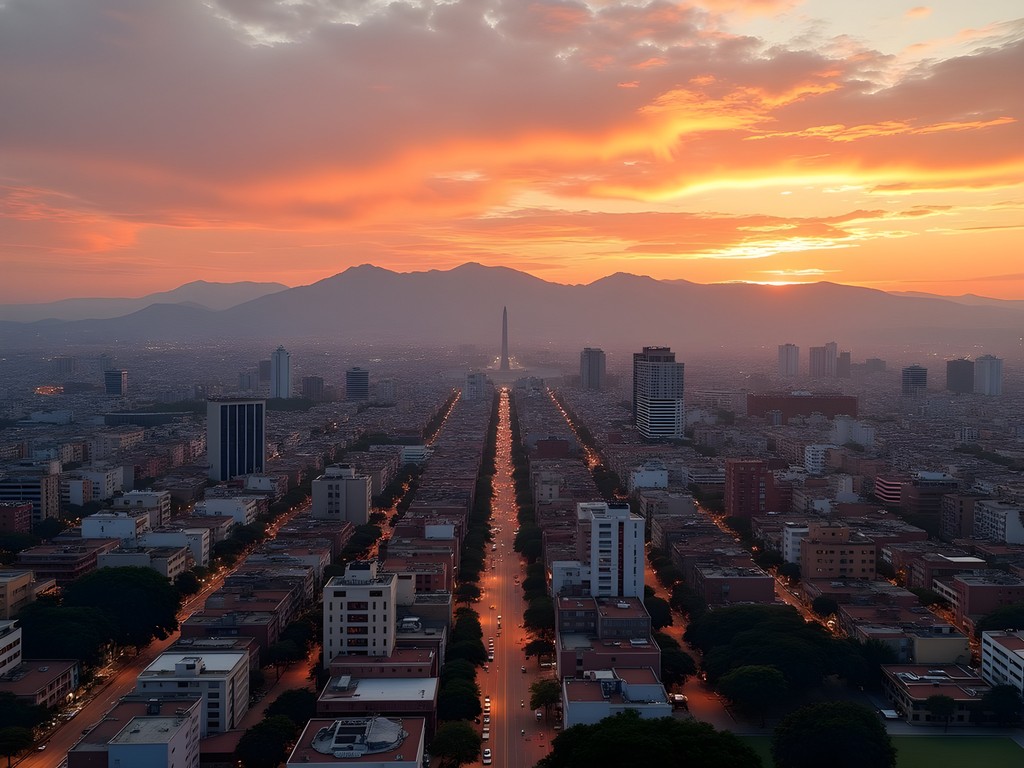
💡 Pro Tips
- Pack a microfiber cloth for lens cleaning as dust is prevalent, especially near the Obelisco monument
- A polarizing filter helps manage the harsh midday light when shooting the colonial architecture
- Bring a small flashlight for navigating the dimly lit historic streets during blue hour shoots
The Obelisco: Timing Your Perfect Monument Shot
The 75-meter-tall Obelisco monument stands as Barquisimeto's most recognizable landmark and presents fascinating photographic challenges. Having visited similar monumental structures in cities worldwide, I approached this one with particular technical curiosity.
The ideal time to photograph the Obelisco is approximately 30-45 minutes before sunset. During my visit in October, this meant arriving around 5:30 PM. This timing allows you to capture the structure with balanced exposure between the monument itself and the increasingly dramatic sky. The Obelisco's white surface reflects the changing light conditions beautifully, transitioning from neutral white to warm amber as the sun descends.
Positioning is crucial here. While most tourists photograph from the obvious frontal perspective, I discovered that moving approximately 200 meters northeast offers a more compelling composition that incorporates both the monument and the Lara State Government buildings. This creates a visual dialogue between traditional monumentalism and contemporary administrative architecture.
For those interested in night photography, the Obelisco's illumination system activates about 20 minutes after sunset. I recommend using a remote shutter release to eliminate camera shake during long exposures. The changing colors of the monument against the deep blue twilight sky create dramatic opportunities for time-lapse sequences.
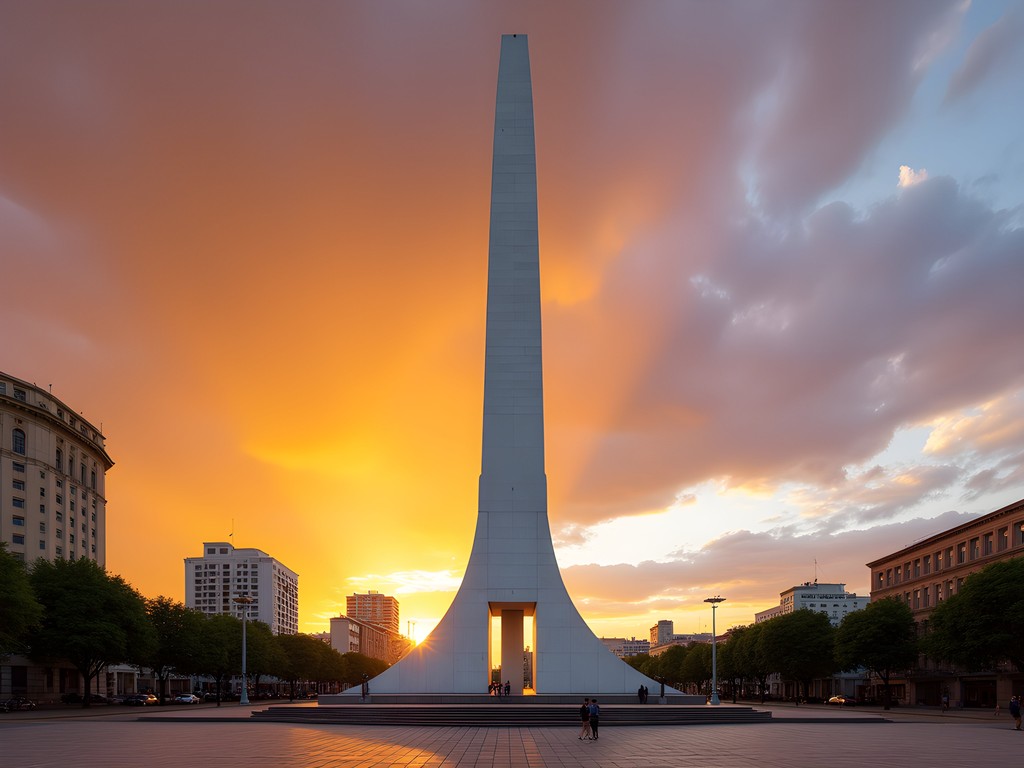
💡 Pro Tips
- Use a wide-angle lens (16-24mm range) to capture the monument's full height while maintaining perspective
- Include local pedestrians for scale when shooting from the base looking upward
- Visit twice: once during golden hour and again after dark to capture dramatically different moods
Cathedral of Our Lady of Mount Carmel: Architectural Photography Challenges
Barquisimeto's Cathedral presents a fascinating study in contrasts for architectural photographers. Its modernist design (completed in 1968) stands in stark opposition to what many expect from Latin American religious architecture, making it an intriguing subject.
The cathedral's unique geometric forms—particularly its dramatic triangular facade—create challenging exposure situations. During my three visits to the site, I found that standard metering frequently struggled with the stark white concrete against Venezuela's bright sky. Spot metering and exposure bracketing became essential techniques.
Interior photography presents its own set of challenges. The cathedral's design incorporates dramatic light shafts that pierce through strategic openings, creating high-contrast situations that test any camera's dynamic range. I found that visiting between 10-11 AM provided the most balanced interior light, as the sun position creates manageable contrast while still highlighting the architectural details.
For serious architectural work inside, I recommend using a collapsible reflector to fill shadows in the darker corners of the space. This simple tool allowed me to capture detailed images of the fascinating modernist stations of the cross without resorting to flash photography, which is frowned upon during services.
The cathedral plaza also offers excellent opportunities for street photography, as it serves as a social hub where local life unfolds naturally throughout the day. The contrast between the modernist structure and traditional Venezuelan daily life creates compelling visual narratives.
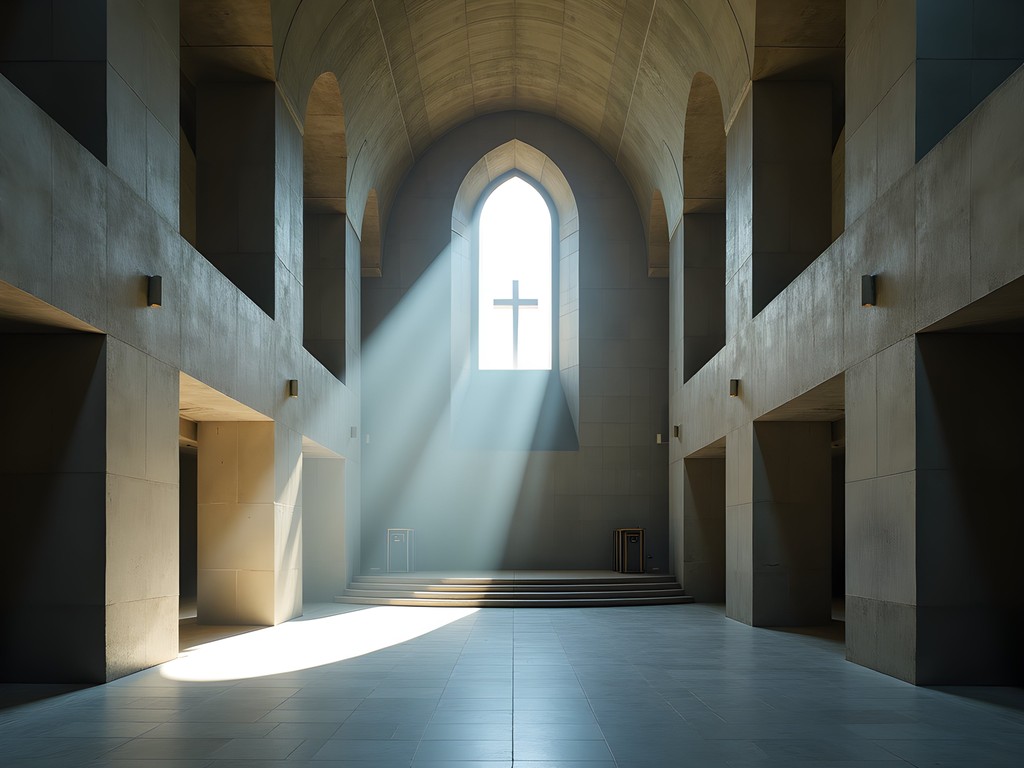
💡 Pro Tips
- Use a circular polarizer to manage reflections on the cathedral's glass elements
- Photograph the cathedral from the northwest corner at sunset for the best light on the facade
- Respect worshippers by using silent shooting mode and avoiding flash during services
Capturing Local Culture at Mercado Mayorista
As both an educator and photographer, I find markets to be invaluable windows into local culture—and Barquisimeto's Mercado Mayorista doesn't disappoint. This sprawling farmers market is Venezuela's largest and offers photographers an authentic glimpse into daily Venezuelan life far from tourist attractions.
Visiting at dawn (around 5:30-6:00 AM) provides the most photogenic experience as vendors set up their stalls in beautiful directional morning light. The market's vibrant colors—from tropical fruits to local textiles—pop magnificently in this early illumination. It's worth noting that early morning temperatures in fall hover around 18°C (65°F), so a lightweight jacket that packs small is worth carrying.
Street photography ethics are particularly important here. I always follow my personal rule of establishing rapport before photographing vendors or shoppers. My rudimentary Spanish proved adequate when paired with genuine interest in their products. Purchasing small items from vendors whose portraits you wish to take is both courteous and opens doors to more intimate photographic opportunities.
The market's covered sections present challenging low-light conditions. Rather than pushing ISO beyond comfortable limits, I found that a compact LED light provided subtle fill illumination without disrupting the market atmosphere. This small investment dramatically improved my keeper rate in the dimmer produce sections.
Food photographers will find endless subjects, from exotic tropical fruits to traditional Venezuelan specialties being prepared at small food stalls. The local 'queso de mano' (hand cheese) production particularly fascinated me as a documentary subject, with its traditional preparation methods still practiced by market vendors.
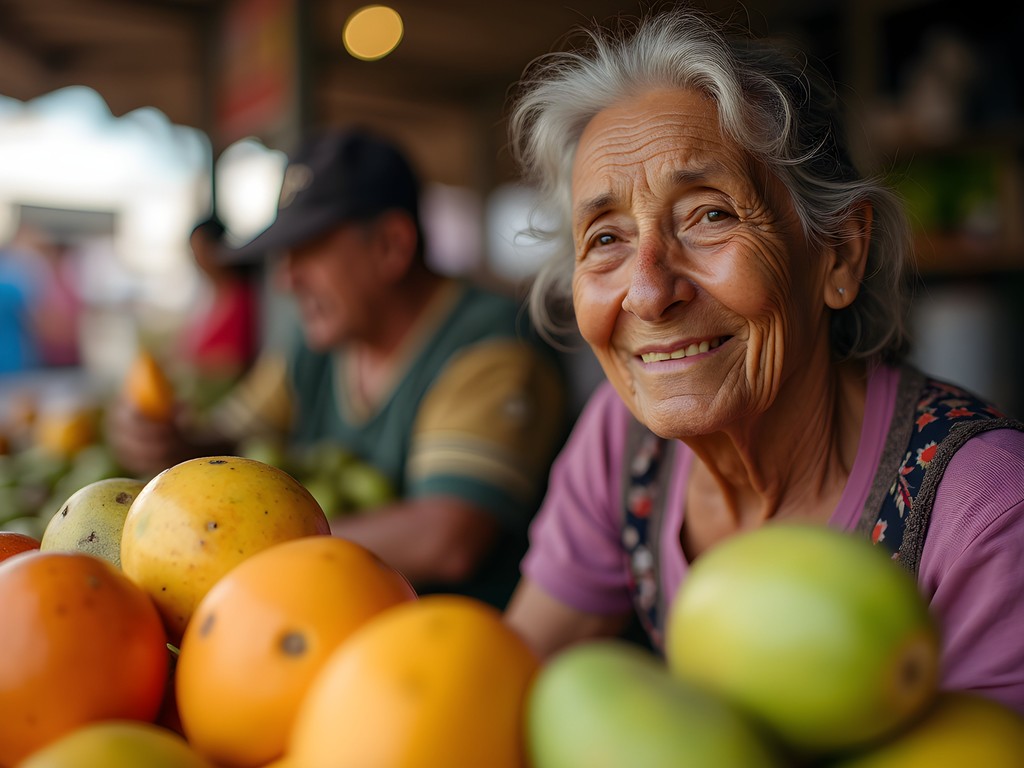
💡 Pro Tips
- Bring small denomination bolivars for purchases as vendors appreciate exact change
- Use a cross-body camera bag like the Peak Design Sling for security in crowded market areas
- Ask permission before photographing individual vendors, but general market scenes rarely require explicit permission
Twilight Magic: Barquisimeto's Famous 'Red Hour'
The phenomenon that gives Barquisimeto its 'City of Twilights' nickname deserves dedicated attention from photographers. The city's location and atmospheric conditions create unusually prolonged and vivid sunset displays that transform the urban landscape.
After photographing twilight in cities across five continents, I can confidently say that Barquisimeto offers something truly special. The quality of light during the 'red hour' has a distinctive character—warmer and more saturated than typical urban sunsets, with exceptional staying power that extends the shooting window.
The Loma de León viewpoint provides the classic panoramic perspective, but I discovered several less-frequented locations that offer equally compelling compositions. The rooftop of the Centro Comercial Las Trinitarias mall (accessible by requesting permission from security) provides a western-facing view that captures the sunset illuminating the city grid. Similarly, the upper floors of the Hotel Jirahara offer hotel guests excellent northeastern vistas.
Technically speaking, these twilight scenes present significant dynamic range challenges. I relied heavily on my graduated ND filter to balance exposure between the brilliant sky and rapidly darkening cityscape. Timing is everything—the most magical light occurs approximately 15-20 minutes after the sun disappears below the horizon.
For those interested in time-lapse photography, Barquisimeto's twilights are ideal subjects. I set up a portable power bank to keep my camera running through multiple 45-minute sequences, capturing the city's remarkable transition from day to night. The resulting time-lapse videos reveal color shifts and lighting transitions that still photography cannot fully convey.
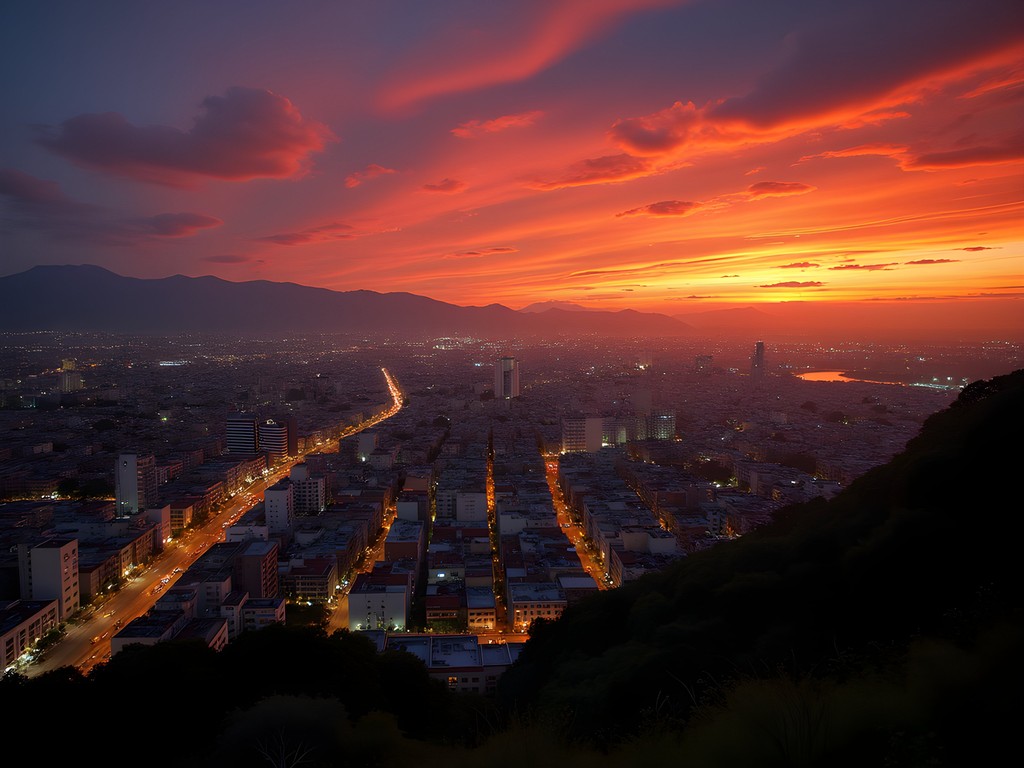
💡 Pro Tips
- Arrive at viewpoints at least 30 minutes before sunset to secure optimal positions and set up equipment
- Bracket exposures (±2 stops) to capture the full dynamic range of twilight scenes
- Include some foreground elements when shooting from elevated positions to add depth to cityscape compositions
Final Thoughts
Barquisimeto represents what I value most in photographic destinations—authentic cultural experiences combined with distinctive visual characteristics that create unique imaging opportunities. As Venezuela navigates its complex socioeconomic challenges, tourism remains limited, offering photographers the rare gift of documenting a vibrant city relatively untouched by international tourism.
The city's famous twilights alone justify the journey for serious photographers, but I found myself equally captivated by the architectural contrasts, vibrant market culture, and genuine warmth of Barquisimeteños. The technical challenges—from high-contrast lighting situations to rapidly changing twilight conditions—will test and expand your photographic capabilities.
As with any destination experiencing economic uncertainty, proper preparation is essential. Research current conditions, connect with local photographers when possible, and approach your visit with both cultural sensitivity and practical awareness. The photographic rewards, however, are exceptional—a portfolio of images distinct from the oversaturated visual tropes of more common destinations.
I hope this guide inspires you to consider Barquisimeto for your next photographic expedition. The City of Twilights awaits with its unique light, compelling contrasts, and countless stories waiting to be captured through your lens.
✨ Key Takeaways
- Barquisimeto's famous 'red hour' offers photographers uniquely prolonged and vivid twilight shooting opportunities
- The city's markets provide authentic cultural documentation away from tourist circuits
- Architectural contrasts between colonial, modernist, and contemporary structures create compelling visual narratives
- Fall offers the ideal combination of comfortable temperatures and dramatic cloud formations
- Budget-conscious photographers will appreciate Venezuela's favorable exchange rates while navigating economic complexities
📋 Practical Information
Best Time to Visit
September-November (fall)
Budget Estimate
$30-50 USD per day (excluding flights)
Recommended Duration
5-7 days
Difficulty Level
Intermediate
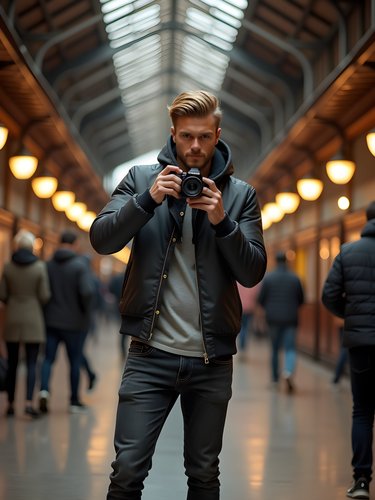



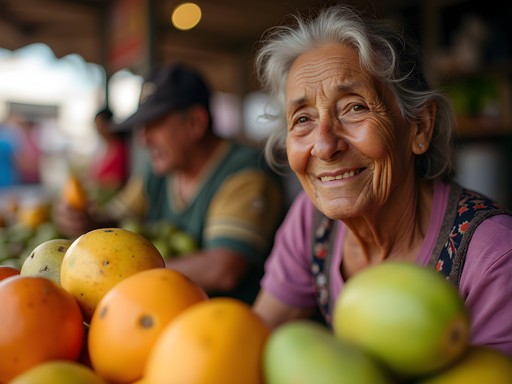





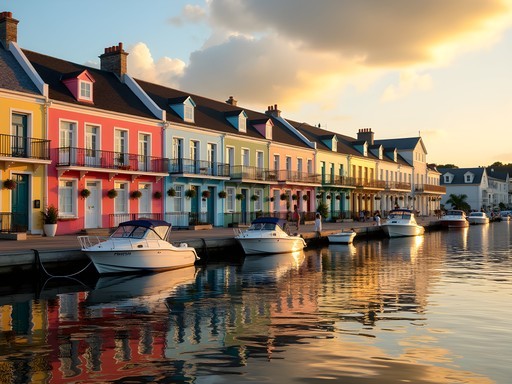
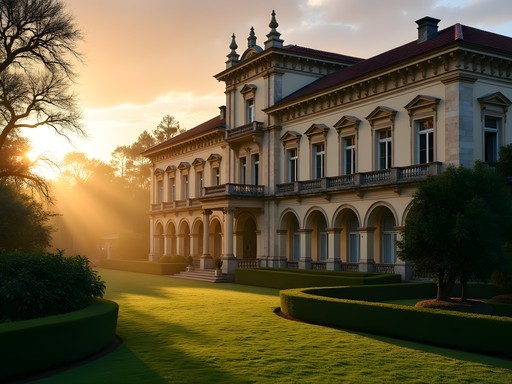


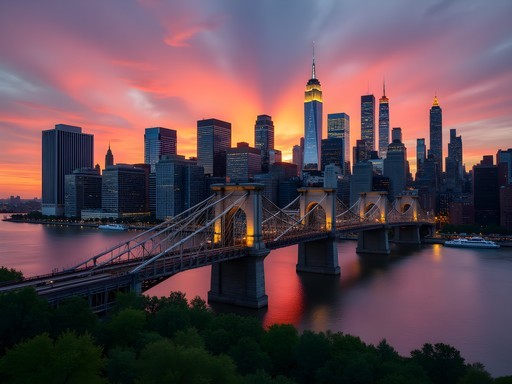
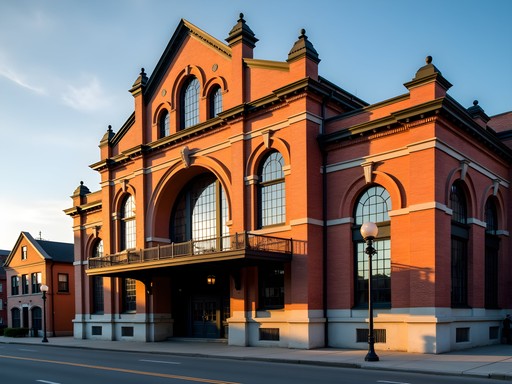
Comments
Nicole Russell
Joshua! This guide couldn't have come at a better time! I'm heading to Venezuela next month and Barquisimeto wasn't on my radar until now. Your section about Mercado Mayorista has me especially excited - I love capturing authentic market scenes. Do you think three days is enough to hit all these photo spots? Also, did you find the locals receptive to being photographed? Sometimes I struggle with street photography ethics in new places. Your twilight shots are giving me serious inspiration! 🌆📸
Joshua Butler
Three days should be perfect, Nicole! For street photography, I found people at the market quite open once I made a small purchase and asked permission (my basic Spanish helped). The vendors were particularly proud of their displays and often suggested better angles!
islandace
Great post! How did you handle the changing light conditions? My photos always turn out too dark or blown out when shooting at sunset.
Joshua Butler
I used bracketing for most twilight shots - taking multiple exposures and blending them later. Also, my ND filter was essential for those dramatic sky shots near the Obelisco.
PhotoEnthusiast22
Wow, adding this to my bucket list right now!
moontime7175
Just got back from Barquisimeto last week and your guide was spot on! The Mercado Mayorista was a photographer's dream - so many vibrant colors and authentic moments. I found the early morning light there was almost as magical as the twilight hours. One tip to add: the small cafes along Carrera 19 have fantastic viewpoints of the city skyline that aren't mentioned in most guides.
wintermood
Thanks for the Carrera 19 tip! Adding that to my notes for when I go back.
nomadmood
Never heard of this place before. Adding to bucket list!
sunnynomad
Any specific camera settings you'd recommend for capturing those famous Barquisimeto twilights? I'm an amateur with a basic DSLR.
Joshua Butler
For twilight shots, I'd recommend using a tripod (essential!), shooting in aperture priority around f/8-f/11, and keeping ISO as low as possible (100-400). The twilight in Barquisimeto has this amazing purple-orange quality that happens fast, so bracket your exposures. The light changes quickly during the 'golden hour' so be ready about 30 minutes before sunset.
sunnynomad
Thanks! I have a basic tripod but might need to upgrade. Any recommendations for something lightweight but stable?
Joshua Butler
I used a travel tripod which was perfect - lightweight but sturdy enough for those evening shots. The winds can pick up around the Obelisco, so something stable is definitely worth the investment!
bluebuddy
WOW! Those cathedral shots are STUNNING! Did you need special permission to photograph inside? I'm planning a photography trip through South America next year and adding this to my list RIGHT NOW!!! 📸✨
Joshua Butler
Thanks for the enthusiasm! For the cathedral interior, I did ask permission from the office near the entrance. They're generally welcoming to photographers outside of service times, but tripods aren't allowed without advance permission.
Fatima Sims
Joshua, you've captured the essence of Barquisimeto beautifully! I visited last year while documenting cultural festivals across South America and was equally enchanted by the quality of light there. The way you described shooting at the Obelisco during golden hour is spot on - that gradient of colors is something special. I'd add that the Parque del Este offers some fantastic opportunities for street photography, especially on Sunday afternoons when local families gather. Did you get a chance to photograph any of the local musicians? The city has such a rich musical heritage worth capturing.
Joshua Butler
Thanks Fatima! I did spend an evening at a local peña where some traditional llanera musicians were playing - those shots are going in my next post about cultural experiences. Parque del Este was wonderful too, you're right about Sundays!
beachguy
How's the safety situation for photographers with expensive gear?
Fatima Sims
@beachguy I kept a low profile with my gear - used a non-descript bag and was mindful about when I took out my camera. The usual precautions apply, but I never felt unsafe in the main areas Joshua mentioned.
wanderlustguide
Those twilight shots look incredible! Never considered Venezuela before.
smartwalker
Great post! How safe did you find Barquisimeto for walking around with camera gear? I've heard mixed things about Venezuela in general.
Bryce Diaz
I was in Barquisimeto last year and found it relatively safe compared to Caracas. Just use common sense - don't flash expensive gear in sketchy areas, be aware of surroundings, and maybe hire a local guide for certain neighborhoods. The Obelisco area felt very secure during daytime.
Joshua Butler
Smartwalker - great question. I stuck to daytime shooting in most areas except for twilight at the Obelisco which is well-patrolled. I used a discreet camera bag and kept my most expensive lenses hidden when not shooting. The Cathedral area and main plazas felt quite safe, but I'd recommend having a local contact when venturing into less touristy neighborhoods.
smartwalker
Thanks both! That's really helpful. Might look into hiring a guide then.
Venture X
Premium card with 2X miles, $300 travel credit, Priority Pass